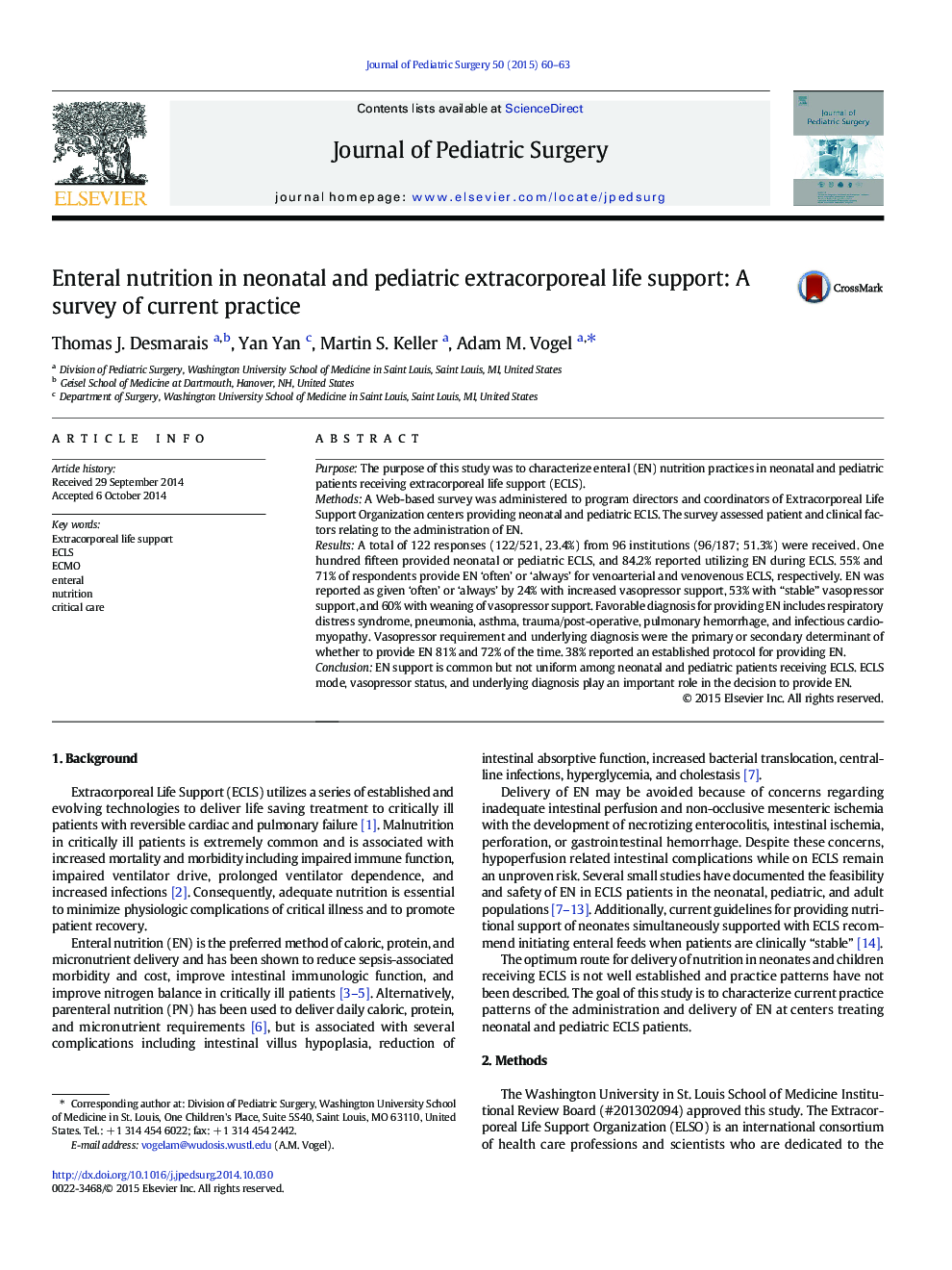| Article ID | Journal | Published Year | Pages | File Type |
|---|---|---|---|---|
| 4155201 | Journal of Pediatric Surgery | 2015 | 4 Pages |
PurposeThe purpose of this study was to characterize enteral (EN) nutrition practices in neonatal and pediatric patients receiving extracorporeal life support (ECLS).MethodsA Web-based survey was administered to program directors and coordinators of Extracorporeal Life Support Organization centers providing neonatal and pediatric ECLS. The survey assessed patient and clinical factors relating to the administration of EN.ResultsA total of 122 responses (122/521, 23.4%) from 96 institutions (96/187; 51.3%) were received. One hundred fifteen provided neonatal or pediatric ECLS, and 84.2% reported utilizing EN during ECLS. 55% and 71% of respondents provide EN ‘often’ or ‘always’ for venoarterial and venovenous ECLS, respectively. EN was reported as given ‘often’ or ‘always’ by 24% with increased vasopressor support, 53% with “stable” vasopressor support, and 60% with weaning of vasopressor support. Favorable diagnosis for providing EN includes respiratory distress syndrome, pneumonia, asthma, trauma/post-operative, pulmonary hemorrhage, and infectious cardiomyopathy. Vasopressor requirement and underlying diagnosis were the primary or secondary determinant of whether to provide EN 81% and 72% of the time. 38% reported an established protocol for providing EN.ConclusionEN support is common but not uniform among neonatal and pediatric patients receiving ECLS. ECLS mode, vasopressor status, and underlying diagnosis play an important role in the decision to provide EN.
